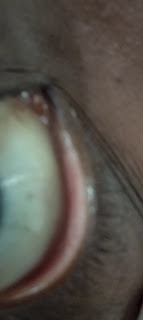Internal assessment 1
Roll no-30 internal assessment-1
Q1)define bone density, how it is measured?what are the causes ,clinical features ,diagnosis and management of osteoporosis?
Definition of bone density-
Bone density is measured by-
It may be done using X-rays, dual-energy X-ray absorptiometry (DEXA or DXA), or a special CT scan that uses computer software to determine bone density of the hip or spine.
Definition of myxedema coma-
A rare and life-threatening complication of hypothyroidism (low levels of thyroid hormones in the bloodstream) characterized by loss of brain function (coma).
Short notes
Q3) what is diagnostic approach of young onset hypertension and it’s treatment.
Q4) how do you clinically localise the anatomical level of lesion in spinal cord diseases.
Q5) causes, diagnosis, treatment of atrial fibrillation
Most common causes leading to atrial fibrillation include heart valve disease, heart failure, and others. Atrial fibrillation (AF) is an abnormal heart rhythm characterized by an irregular and fast heartbeat. The upper chambers of the heart (atria) beat chaotically
Treatment of atrial fibrillation -
- Beta blockers. These medications can help slow the heart rate at rest and during activity.
- Calcium channel blockers. These medicines control the heart rate but may need to be avoided by those who have heart failure or low blood pressure.
- Digoxin. This medication may control the heart rate at rest, but not as well during activity. Most people need additional or alternative medications, such as calcium channel blockers or beta blockers.
- Anti-arrhythmic medications. These drugs are used to maintain a normal heart rhythm, not just to control the heart rate. Because they tend to have more side effects than drugs that control the heart rate, anti-arrhythmics tend to be used more sparingly.
- Blood thinners. To reduce the risk of stroke or damage to other organs caused by blood clots, a doctor may prescribe a blood-thinning medication (anticoagulant). Blood thinners include warfarin
Q6)describe about megaloblastic anemia.
drug is actually able to form a physical barrier between epithelium and damaging agents (-bile salts, drugs, refluxate...). Moreover, sucralfate increases the local levels of fibroblast growth factors and induces a rise in the mucosal concentration of prostaglandins which are considered important factors in mucosal healing.
Q12) mention renal manifestations of snake bite
Besides the local and systemic symptoms, clinical renal manifestations vary from mild proteinuria, haematuria, pigmenturia toacute renal failure. Bites by haemotoxic snakes and myotoxic snakes are the common causes of renal involvement especially acute renal failure.
Q13)causes of portal hypertension






























Comments
Post a Comment